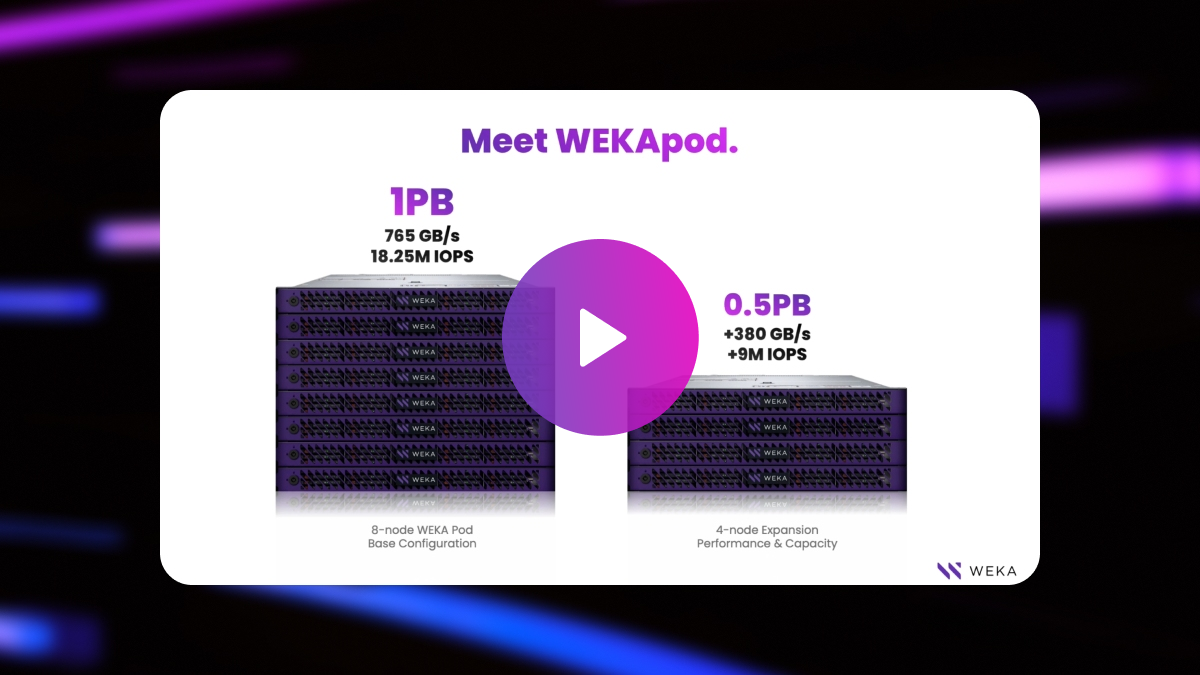What is Unstructured Data? Why Does It Matter?

Curious about unstructured data? We give a complete explanation of what unstructured data is, example usage, and best practices for managing it.
What is unstructured data?
Unstructured data is not organized in a predefined format and cannot be stored in a traditional relational database. Some examples of unstructured data include the following:
- Videos
- Emails
- Photos
- Webpages
Data Structure and Its Impact on Modern Applications
When business and technical leaders talk about our “Big Data” or “data-driven” world, they are referring to the innovations and infrastructure in place to help us use data in many valuable ways. As ubiquitous data collection becomes the norm, even in locations outside of social media (in areas like healthcare, retail, or life sciences), it’s critical that we understand that data better and learn how we can serve the people that it represents.
Data management and orchestration represents one of the more esoteric and essential disciplines in data science.
There are 3 broad categories of data “structure”:
- Structured Data: Structured data is just that: it comes in a structured, organized way. More specifically, structured data refers to data in relational databases. Engineers, administrators, and automated systems can map structured data onto tables of information. Using SQL or another database language can allow the user to reliably access that data through search queries.
- Unstructured Data: Conversely, unstructured data doesn’t fit into a relational model and cannot be stored in a relational database. Unlike structured data, which is relatively easy to import into a database and traverse through SQL queries, this type of data doesn’t have an internal structure from which to build relations. That doesn’t mean that you cannot perform content searches, but that requires a different set of tools.
- Semi-Structured Data: As the name implies, semi-structured data is information that has some organizational properties in place that aren’t as tabular or rigid as data in a relational database. This category of data includes data structured through markup languages like XML or JSON.
By far, unstructured data is one of the most common forms of data. It encompasses a large variety of data types, including the following:
- Images and Videos: While links to images can be stored in relational databases for future reference, images themselves are often unstructured or semi-structured, depending on the included metadata. The same goes for videos.
- Text Files and Emails: As plain-text information, emails are not bound by any single organizational schema. While the metadata can be in a semi-structured format, more often than not, plain emails are unstructured data. Likewise, text files can either be unstructured (in terms of basic text information) or semi-structured (like XML-based Word documents).
- Healthcare Information and Medical Records: While data like patient contact information can often exist in a relational database, medical records are usually a collection of scanned documents, PDFs, online forms, and handwritten notes.
- Social Media Data: All social media platforms collect and store data from users and their activities. This data can be structured (in user information or friends and follower relationships), but other information like messages, posts, and images are unstructured.
- Machine-Generated Information: Often, data generated by machines come in both structured and unstructured forms. Data created during geospatial analysis, IoT sensor readings, or real-time analytics can produce insights.
Since unstructured information makes up such a large portion of the data we use overall, it has a significant impact on business, particularly when it comes to organizing and analyzing it.
How Is Unstructured Data Stored, Managed, and Secured?
One important thing to understand when planning a storage solution for unstructured data is that there isn’t a global approach to collecting and holding that data. It isn’t enough to think about just relational databases. At the same time, you cannot ignore the problem.
It’s important to remember that unstructured doesn’t mean entirely without structure. You’ll need a way to access that data reliably. Some common approaches include the following:
- Data Lakes: Data lakes are large repositories that can store a significant volume of data, structured or not. This storage architecture allows for the near limitless storage of data in its native format, with simple batch and real-time loading from single or multiple data sources. It provides the potential for centralized authentication and authorization across a considerable volume of data. Finally, it helps with one of the significant challenges of unstructured data—scalability.
- Permission Access and Activity Monitoring: A centralized database has more streamlined management and security functionality than a large file server full of file directories accessible from outside an organization. Securing data includes using centralized access management through zero-trust authorization, permission management, and even Multi-Factor Authentication (MFA). It also calls for potential activity monitoring or even a SIEM solution.
- Clean Content and Accessibility: Just because data is unstructured doesn’t mean it has to be disorganized. Unorganized data can reduce data quality, silo information and make it inaccessible, or restrict scalability. Cleaning data to follow a logical and efficient organizational structure can help you streamline essential data analysis.
What Are Some Best Practices for Analyzing Unstructured Data?
Unstructured data is still open to analysis—in fact, most of your best data analysis and derived insights are going to come from this data. But, to better understand that data, you must approach it with a clear idea of what you want to accomplish.
To best analyze unstructured data, consider these steps:
- Understand that Analysis Comes from Extraction: Unstructured data doesn’t lend itself to a quick breakdown in its native form. Instead, many analytic platforms will extract information from this kind of data and analyze it directly or map it into structured databases for further review. Having a clear idea of the kind of information you plan to get from your data and then implementing explicit mapping schemas to organize that data in a meaningful way will give you a better chance at effectively using that information.
- Plan for an End Goal: Following the previous action item, you must have a clear goal in place that you can use to guide your extraction and analysis. This plan will also shape how you perform research and what kind of insights that you expect to get.
- Map Your Data Sources and Clean Incoming Information: Most likely, you use multiple sources of data, and managing inputs is a complex task. It’s crucial that you have a plan to sanitize and store data from various sources so that you’re getting useful information from every resource available.
- Utilizing Data Lakes and AI: Data lakes give you a secure, fast way to store unstructured data in its native format. More importantly, Data lakes are often part of advanced cloud computing and file system platforms that include AI that can drive data analysis. AI can automate the storage, extraction, and analysis of unstructured data at volumes and speeds that humans cannot do. Prioritizing modern storage and AI tools can help with challenges to scaling operations or maintaining optimal data processing speeds.
- Invest Time and Money in Information Governance: Unstructured data can throw a wrench in large-scale collaboration, particularly with large sets of data. A strong and effective governance policy, combined with the suggested tools and approaches above, can remove barriers and break down silos between different parts of your IT and business operations.
WEKA: The Data Platform for AI
Complex workloads for analytics, in areas like genomics and machine learning, can prove quite a challenge for any system or infrastructure. WEKA reimagines what it means to manage this data with a combination of high-performance, non-volatile memory (NVMe) workload consolidation across multiple protocols and resilient data at scale.
Alongside powerful computing and storage for data, WEKA provides the features that any modern cloud computing solution demands:
-
- Hardware-agnostic implementation
- Enterprise-grade end-to-end security using XTS-AES 512 bit key encryption
- Seamless orchestration over hybrid-cloud infrastructure
- Automatic data optimization with an optimal mix of NVMe SSD and HDD drives
If you’re working with extensive machine learning or AI workloads and want to learn more about a platform that will accelerate your data pipelines Contact Us today!
Additional Resources
Redefining Enterprise-Class, High Performance Unstructured Storage





